At first, it may seem a bit odd that a newspaper report is one of the KS2 text types that we have to teach.
After all, we're all aware that newspapers are a dying breed. People are increasingly turning to the internet and social media for their news.
Nevertheless, online news services still have their articles written in a style that closely follows the features of a newspaper report that have endured for decades, if not centuries.
Furthermore, it’s a style that helps to develop a very focused approach to writing. The question is, how can you improve your subject knowledge so that you can teach the genre with confidence? As they used to say, read all about it!
Newspaper report and journalistic writing examples
As with any text type, you need to give your pupils the chance to explore a range of quality examples. The problem these days is that fewer and fewer people regularly take a newspaper.
Also, the money-making, attention-grabbing side of the industry is taking over. That means too many of the stories are so sensational or salacious that they are totally unsuitable for primary-age children.
If you’re lucky, you might have a solid, upstanding local paper you could fall back on. Alternatively, try The Week Junior – an excellent current affairs magazine, packed with fascinating, child-focused articles from around the world.
We have a large archive of articles from the paper, along with a selection of activities to help pupils explore and challenge the content – perfect if you’re looking for model texts.
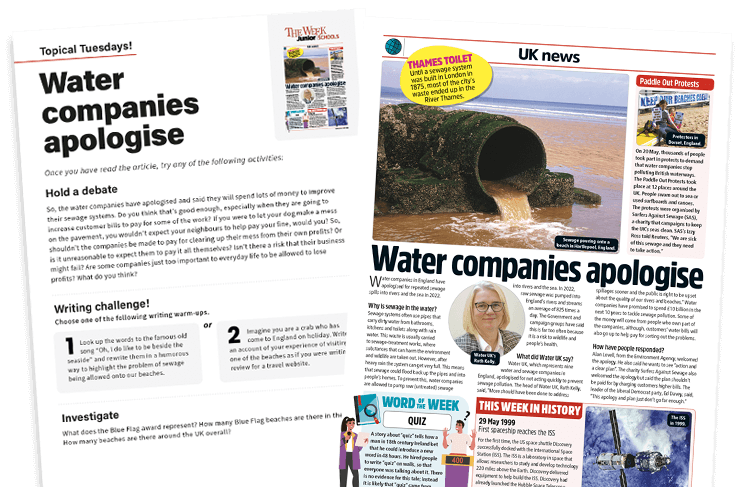
Alternatively, this Year 4 resource features an original model text by children's author Loretta Schauer that takes the form of a newspaper article recounting the discovery of the Staffordshire Hoard.
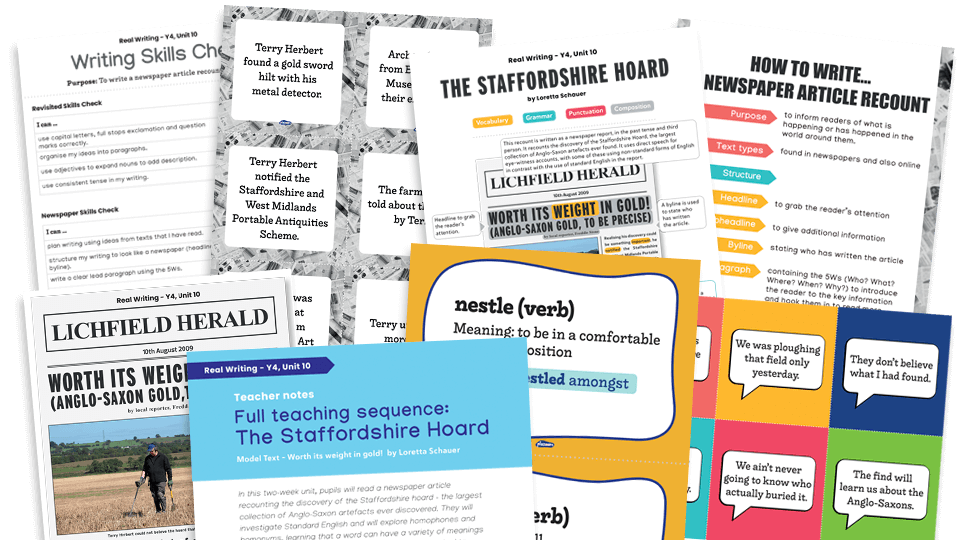
Meanwhile, this Year 6 model text resource pack features a newspaper report WAGOLL by professional author Jon Mayhew, recounting the events from the story of ‘Peter and the Wolf’.
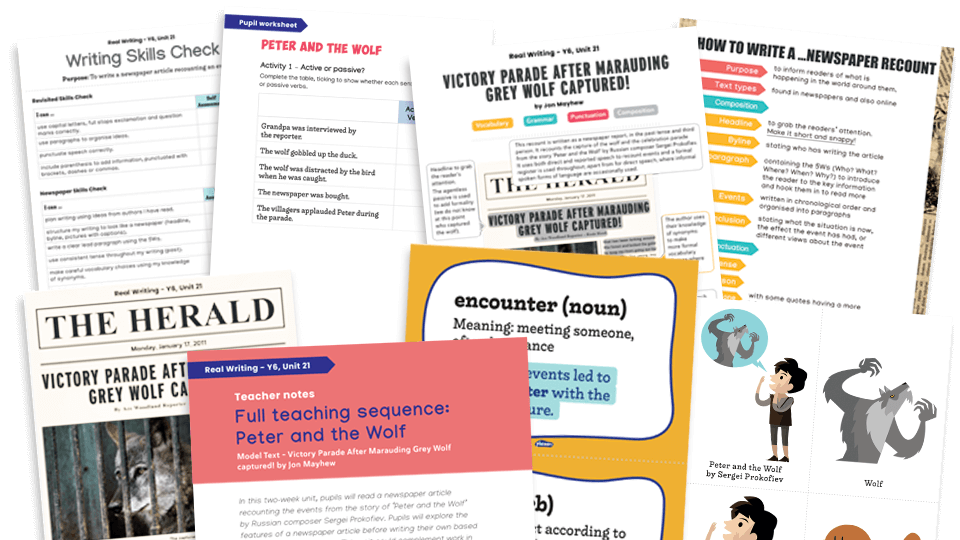
Features of a newspaper report
Most news reports follow a similar structure – and for a very good reason. Each story has to fight for attention within a crowded newspaper. Readers will be tempted to move on to the next one if they are not immediately hooked.
That is why they tend to have a strong headline to let the reader have some idea of what the story is about. After a by-line to tell you who wrote it, the article goes straight in with the make-or-break section – the first paragraph. More of that in a moment.
Thereafter, the facts and events should be told in a logical order. Quotes from witnesses or people who are at the centre of the story give more depth to the article. A summary or wrapping-up statement should bring the piece to a close.
Fortunately, this consistent structure lends itself perfectly to primary writers because it provides a template that is simple to follow.
This also means that they are easy to plan and the success criteria checklists practically write themselves. We offer a ready-made set of examples through our comprehensive KS2 newspaper report writing template.
This helps pupils learn the structure, language and features of newspaper articles, with posters, a planning sheet and teacher guidance.
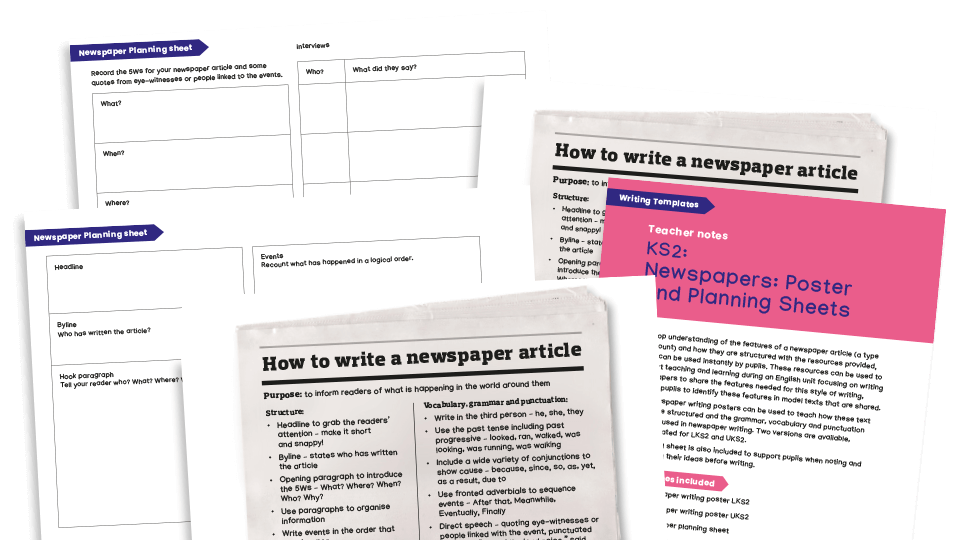
Newspaper writing KS2 – keep it real
When planning your own class’s newspaper report activities, try to make it as relevant to them as possible.
There is sometimes the temptation to synthesise some potential Pulitzer Prize-winning story. However, you are more likely to get good results if it is something the pupils can actually witness and report on, like sports day, a field trip or a special visitor to your school. You might even get some genuine quotes!
The importance of planning
There are potentially two levels of planning here. Of course, there is the usual sort of text planning you would expect for any text type and we can help you there with our effective writing pack for news reports.
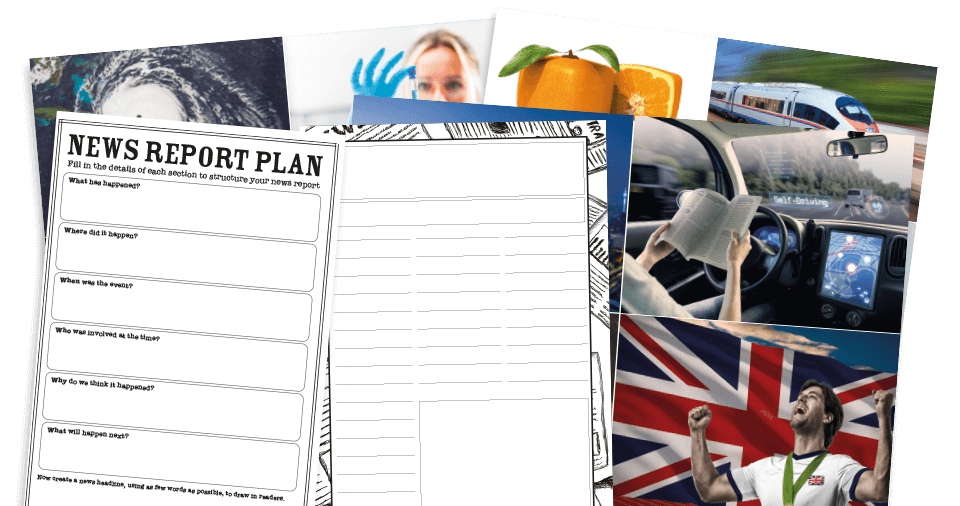
However, having chosen your event to report on, make sure you brief pupils to take detailed notes and make accurate records of any conversations. After all, a good reporter always takes a notebook and probably a voice recorder.
The 5 Ws of a newspaper report
As promised, here is a closer look at first paragraphs. This is probably the most important part of any news article because it has to address the 5 Ws:
A good journalist will usually be able to answer all those questions in one sentence; let’s be kind and give your pupils two sentences. Either way, brevity is the key.
Try carrying in your mind a good example that you can pick apart with your class.
A ten-year-old girl was commended at the town hall by the mayor of Bigtown for services to her community yesterday.
Or, how about this:
Residents of Marshbury faced road chaos yesterday when a fallen tree blocked the by-pass, causing traffic to be diverted through the town centre.
See if pupils can identify the who, what, why, where and when for both of those examples.
After the introduction, the story has to be told in a logical order – usually chronological order – and will expand upon the key elements of the introduction.
Quoting direct speech and reported speech
Quotes from witnesses can be interlaced throughout your newspaper report. This is a good opportunity to revise the punctuation rules for direct speech.
It could also be the chance to cover or recap reported speech, as both forms are frequently used in news articles.
Language features
Idioms
Newspaper reports often include idiomatic language. This would be a good opportunity to explore idioms further by showing how they are used and explaining what they mean.
We have great resource packs for KS2 children covering Victorian, Wild West and Shakespearean idioms. However, for current affairs, it’s probably best to stick to those still in common use today!
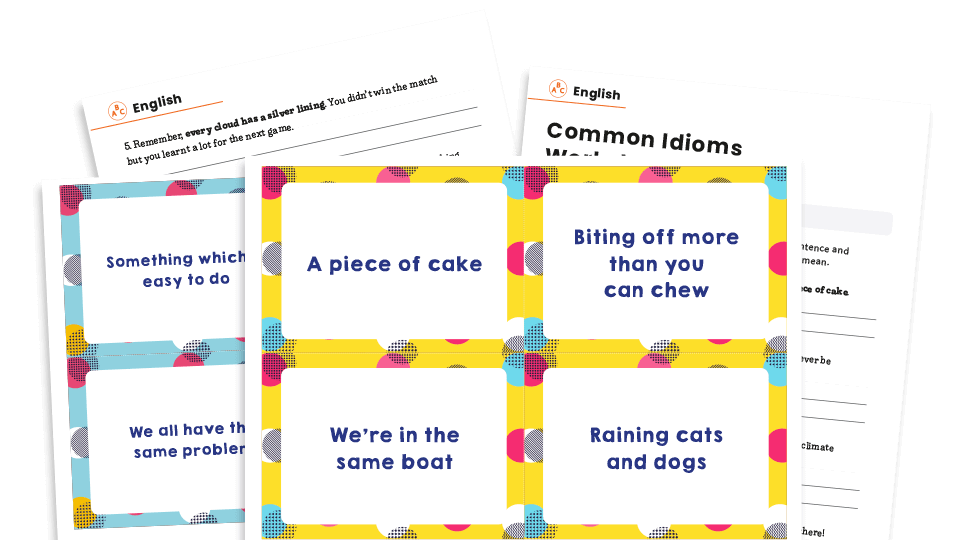
Tone
Despite powerful people trying to pretend otherwise, most journalists try very hard to be factual and accurate in their reporting. Pupils should bear this in mind when writing their own reports.
You can explain that many newspapers have editorial pages where opinions are voiced, but these are separate from the news pages and require a different sort of writing, typically persuasive writing or, ideally, balanced arguments.
That’s the news at 10 tips. Now for a look at the weather…
Sue Drury qualified as a primary teacher in 1999. Teaching pupils from Year 1 to Year 8, she has held a variety of positions including maths and English subject leader, year leader, and assistant headteacher. Sue has mentored students and NQTs, offering guidance and advice using her years of experience. She created many of Plazoom's literacy resources.